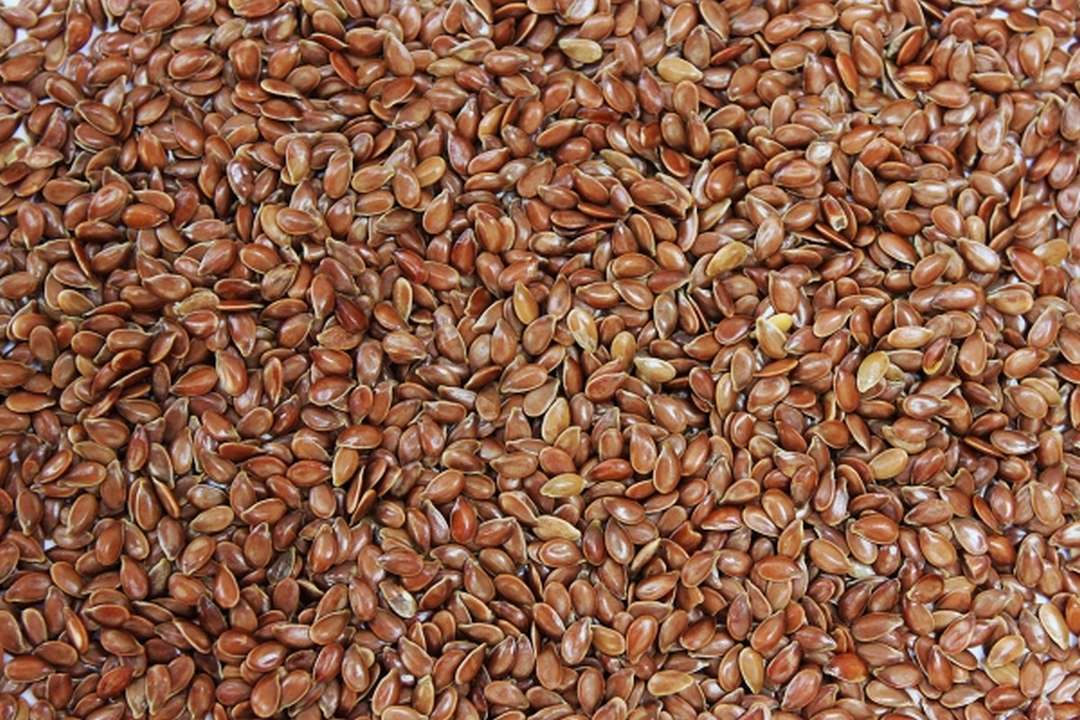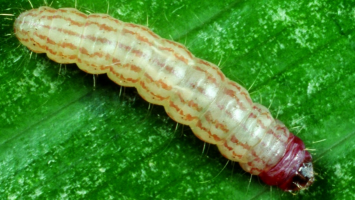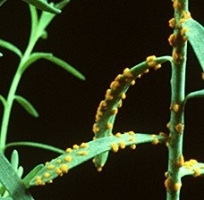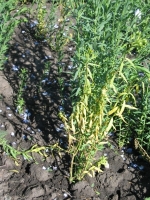T 397 (1984): The plant attains the height of 60-75cm having branching nature. It has green color leaves and blue color flowers. It has round medium capsules. The seeds (7.5-8gm/1000seeds) contain 44% of oil content. It gives an average yield of 4-6qtl/acre.
Jawahar 23 (1985): The plant attains the height of 45-60cm. It has white color flowers which grows simultaneously. The seeds (7-8gm/1000seeds) contain 43% of oil content. It gives an average yield of 4-6qtl/acre. It is resistant to wilt, rust and powdery mildew.
LCK 8528: (Shikha) (1998): It gives an average yield of 5-6qtl/acre of seeds and 4-5qtl/acre of filament.
RLC 6: (Kiran) (1998): The variety gets mature in 115-120 days. It gives 3-4qtl/acre yield in irrigated areas and gives 5-6qtl/acre yield in non irrigated areas. The seeds contain 42-43% of oil content. The variety is resistant to rust and powdery mildew.
LMH: 62 (Padmini) (1999): Gives an average yield of 3-4qtl/acre. The seeds contain 42-45% of oil content. The variety is resistant to powdery mildew and moderately resistant to blast and Lucerne caterpillar. The variety gets mature in 120-125 days.
RL 933: (Meera) (2000): Blue color flower variety which is resistant to rust, wilt and powdery mildew. Gives an average yield of 6-7qtl/acre and contains 42% oil content. Bright brown grains variety which gets mature in 130 days.
RL 914 (2002): It is a late sown variety. Blue flower variety having brown color seeds. Gives an average yield of 7qtl/acre and contains 40-42% of oil content. The variety gets mature in 130-135 days.
Pratap Alsi 1: White flower variety which is grown only in irrigated areas of Rajasthan. Gives an average yield of 8qtl/acre and contains 40-41% oil content. The variety matures in 130-135 days.
Pratap Alsi 2: It is grown only in irrigated areas of Rajasthan. The variety matures in 128-135 days and gives an average yield of 8-9qtl/acre. The seeds contain 42% of oil content.
Other state varieties:
LC 2063 (2007): This variety is suggested for irrigated areas. It has 158-160 days of maturity in rainfed and irrigated areas respectively. It has blue and profuse capsule bearing flowers. Its seeds are medium sized and contain 38.4% oil. This variety is resistant to powdery mildew. Its average yield is 4-5qtl per acre.
LC 2023 (1998): This variety is suggested in irrigated as well as rainfed areas. It is tall with blue colored flower and its seed contain 37.5% oil and yield 4.5qtl/acre. It matures in 155-165 days. It is resistant to powdery mildew.
Surbhi (KL-1): It is best yielding variety which is resistant to rust, lodging as well as powdery mildew and drought. It matures in 165-170 days and contains 44% oil. Its average yield is 3-6 qtl/acre.
Jeevan (DPL-21): It is a dual purpose variety. It is tall with average height of 75 cm and 85 cm. The seed is brown colored, medium in size and flowers are blue colored. It matures in 175-181 days. It is resistant to wilt, rust and powdery mildew and yield is 6qtl/acre of seed.
Pusa-3, LC-185, LC-54, Sheela (LCK- 9211), K2














